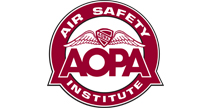Too long, too far
(WPR11FA354)
 By David Jack Kenny
By David Jack Kenny
Stamina varies widely between individuals—perhaps as widely as any characteristic. Competitors in Ironman triathlons run a full marathon after hours of grueling exertion in the water and on the bike; some of the rest of us get worn out just making it back to the sofa from the refrigerator. Athletes find the limits of their stamina by hitting them. If they’re lucky, pilots learn their limits by discovering they’re too tired to fly after they’re safely back on the ground.
On the morning of July 29, 2011, two men took off from Rock Hill, S.C., just south of Charlotte, in a Cirrus SR20. (Rock Hill is a nontowered field and the flight never contacted air traffic control, so the exact time has not been determined; but a Cirrus investigation estimated the departure was about 10 a.m. Eastern Daylight Time.) Near what would have been midnight back in South Carolina, the Cirrus crashed into a hillside in Arizona’s Kaibab National Forest, killing them both. In the 14 hours in between, they’d made just two fuel stops and covered a little more than 1,500 nautical miles of the 1,665-nm total distance. The accident occurred about an hour and a half after sunset, almost an hour after the end of civil evening twilight, on a moonless night under a high overcast. The elevation of the accident site was 8,900 feet msl.
The owner of the airplane was in the left seat. He was a VFR private pilot; his logbook wasn’t recovered, but an insurance application submitted two months before the accident listed 212 hours of total time, including 132 in the Cirrus. He and his wife had moved to Nevada earlier in the year, but he hadn’t had a chance to bring the airplane home, which was the purpose of this trip. The public record doesn’t indicate why he chose to do it in one day. Nor does it specify how long the airplane had been stranded, but it appears to have been at least a couple of months. When he’d tried to start it on July 26, he found that the battery had gone dead.
His companion held a VFR-only commercial certificate for multiengine airplanes; because he wasn’t instrument-rated, his certificate bore the limitation “Not valid for carriage of persons for hire in airplanes on cross-country flights of more than 50 nautical miles or at night.” He also held private pilot privileges for airplane single-engine land and sea. His logbook wasn’t available, either, but in May 2008 his medical application listed 400 hours of flight experience. His family estimated that by the time of the accident it was probably closer to 600. His make-and-model experience isn’t known.
Investigators were able to establish that the two made a fuel stop in Walnut Ridge, Ark., 486 nm from Rock Hill. They took on just less than 51 gallons. The usable-fuel capacity of the SR20 is 56. They appear to have stayed at Walnut Ridge for about half an hour; their next fuel stop came some four hours and 512 nm later in Guymon, Okla. This time they took just more than 44 gallons and stayed about an hour. The FBO manager couldn’t recall whether they’d gone into town to eat, but the commercial pilot did send a text message indicating they were leaving “after getting food and gas.”
They took off just after 7 p.m. Central time. Indications are that they’d initially planned to fly directly to Henderson, a straight-line distance of some 660 nm. Radar track data show a VFR target on the route from Guymon to Henderson during that period; at its ground speed of 132 knots, 660 nm would have been right at the limit of the SR20’s range after allowing for the 45-minute fuel reserve required for VFR flight at night. Apparently the crew recognized their shaky fuel status: A little more than half an hour before the last radar return, the commercial pilot left a phone message saying they were going to refuel “somewhere in Arizona” before continuing to Henderson.
In the last minute and a half of the flight, the airplane made a slight right turn and then changed course 50 degrees to the left, heading south-southwest toward the Kingman, Ariz., airport 115 nm away. It then turned 90 degrees right to a northwest heading in line with the field at Kanab, Utah, some 80 nm closer. Radar returns ended 15 seconds later.
The accident site was on the eastern edge of the Kaibab Plateau, a ridge that juts up between two relatively flat areas. Maximum elevation figures on the Las Vegas sectional are 7,700 feet msl east of the ridge and 7,400 west of it. In the quadrant where the accident occurred, it’s 9,400. It’s not known whether the SR20 was climbing, descending, or level at the moment of impact, because its transponder was not transmitting Mode C.
There’s no obvious reason they wouldn’t have wanted to squawk altitude, raising the possibility that fatigue led the pilots to mis-set their transponder. Investigators also found the Kollsman window for the altimeter set to 30.47. At the time, altimeter settings at the three airports closes to the crash site were 30.28, 30.15, and 30.03. Were they too tired to remember to check their altimeter setting while flying toward rising terrain at night—or perhaps just too tired to notice that they were flying toward rising terrain at night?
Related Links
"Fighting Fatigue" Safety Brief
"GPS for VFR Operations" online course
"Terrain Avoidance Plan" Safety Brief
"Do the Right Thing: Decision Making for Pilots" Safety Advisor